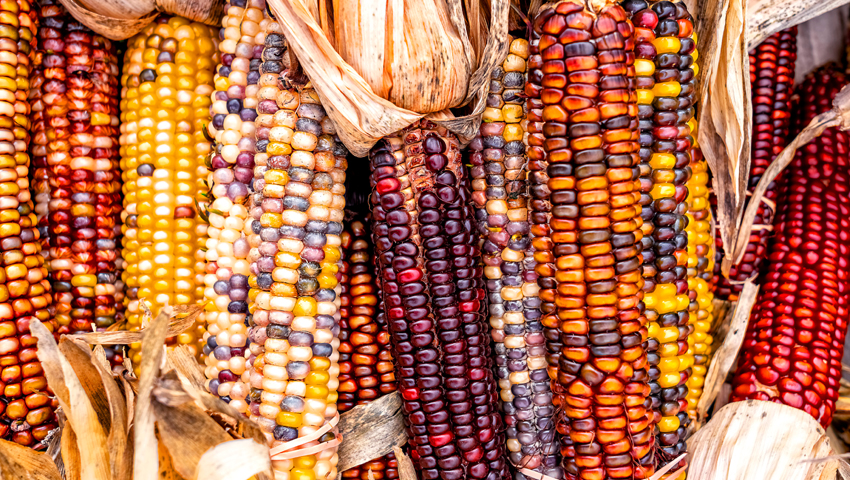Maize can grow successfully in very different local conditions, but an international study headed by the University of Bonn has now demonstrated the important role of the plant root system.
The researchers analysed more than 9,000 varieties in the study and were able to show that their roots varied considerably – depending on how dry the location is where each variety was cultivated. They were also able to identify an important gene that plays a role in the plant’s ability to adapt. This gene could be the key to developing varieties of maize that cope better with climate change. The results were recently published in the journal Nature Genetics.
Maize is a bushy plant with highly branched stems. Finger-length ears grow from the axils of their elongated leaves and every one of them consists of a dozen rock-hard seeds.
You have to look very closely to recognise kinship with one of the world’s most important cultivated plants. And yet experts all agree that the genus teosinte is the ancestral form of all modern varieties of maize. Farmers in southwest Mexico began to select the progeny of teosinte plants that produced the most grains, and the tastiest grains, more than 9,000 years ago. Modern maize crops were cultivated in this way over the course of many generations and now maize is cultivated across all the continents.
Prof. Dr. Frank Hochholdinger from the Institute of Crop Science and Resource Conservation (INRES) at the University of Bonn, said, “We know that the appearance of the plants changed significantly during this time and, for example, the cobs have become much bigger and more prolific. Up to now relatively little has been known, however, about how the root system developed over this period of domestication and afterwards.”
This has now changed thanks to the new study. Over the last eight years, the participating research groups have investigated around 9,000 varieties of maize and 170 varieties of teosinte around the world. The researchers collected seeds and placed them onto special brown paper, which was then rolled into a cigar shape and stored upright in narrow glass beakers. “Around 14 days after germination, we unrolled the paper so that we could observe the early development of the roots without the interference of any soil adhered to them,” says Hochholdinger. In cooperation with a research group headed by Dr. Robert Koller (Forschungszentrum Jülich), the researchers also studied root growth in soil. They used a method that is more commonly known from the field of medicine for this purpose – magnetic resonance imaging.
The results showed how the root structure has radically changed during the domestication of teosinte to cultivated maize.
Dr. Peng Yu, head of an Emmy Noether research group at INRES, said, “In the maize varieties, we often find seminal roots shortly after germination – with as many as ten or more of these roots in some varieties. This is not the case with teosinte.” Seminal roots give the seedlings an initial advantage under optimal conditions: They enable them to absorb large amounts of nutrients from the soil very rapidly. “However, we noticed that another type of root – the lateral roots – suffer as a consequence.”
Lateral roots are especially important for the uptake of water because they greatly enlarge the root surface. This is probably the reason why the number of seminal roots varies considerably depending on the variety: Maize varieties that have adapted to dry conditions grow significantly fewer seminal roots and more lateral roots. When breeding these varieties, farmers in the past were unknowingly selecting plants that have led to the development of this root structure.
160 candidate genes identified
The researchers also investigated which genetic material was responsible for the growth of seminal roots and were able to identify more than 160 candidate genes. “We then studied one of these genes named ZmHb77 in more detail,” says Hochholdinger. “We noticed that plants with this gene grew more seminal and at the same time fewer lateral roots.”
The researchers deliberately switched off this gene in some plants and were able to change the root structure so that they could better tolerate periods of drought. “This gene is thus important for breeding drought-tolerant varieties,” explains the researcher. “In view of climate change, these varieties will become increasingly important if we want to avoid more and more crop failures in the future.”
Researchers from 20 different research groups participated in the work.
